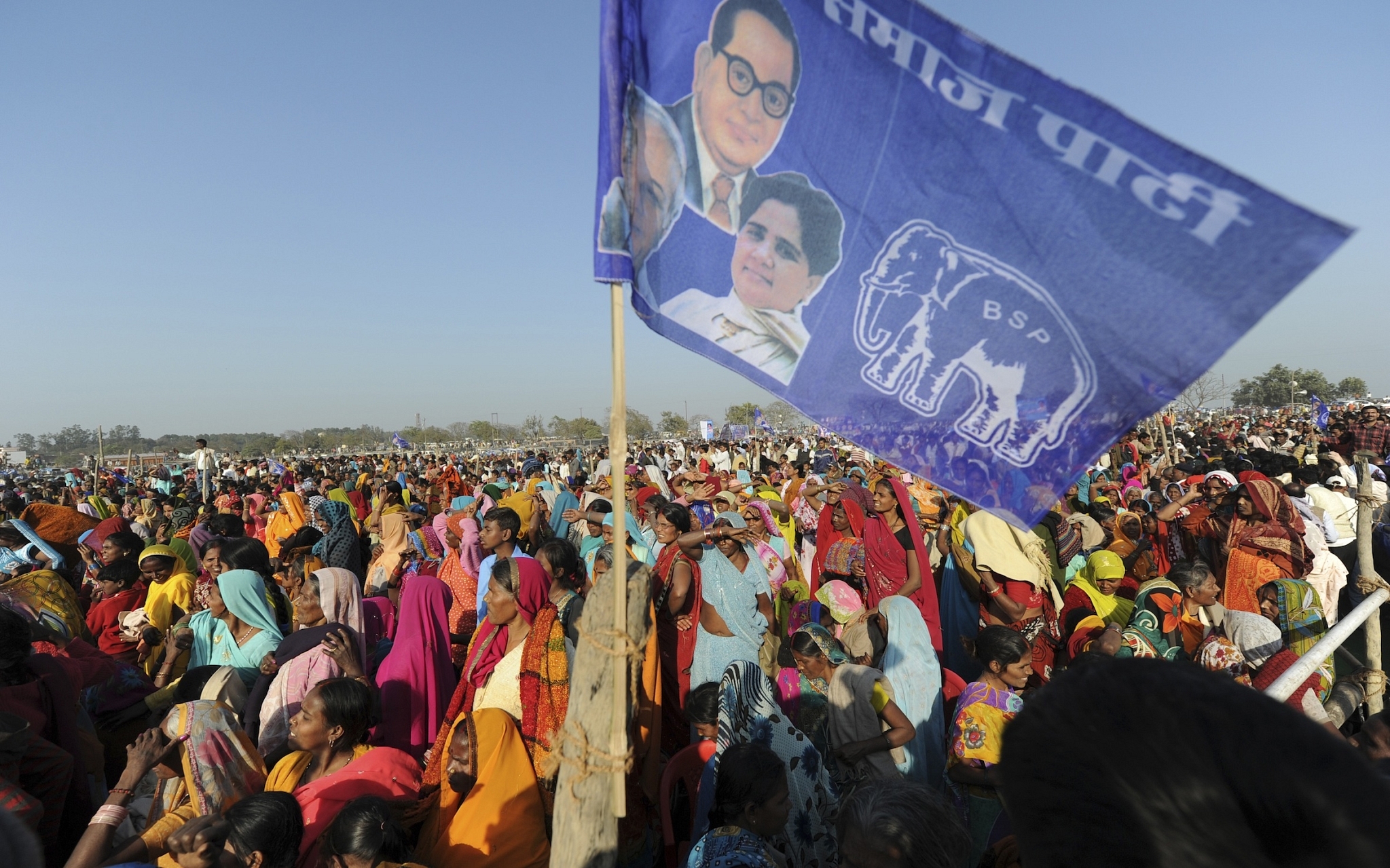Politics
The Scramble For Dalit Votes In Uttar Pradesh

Dalits form close to 21 percent of the population in Uttar Pradesh (UP). Their supposedly en bloc voting behaviour makes them politically significant. They were also, by and large, under the sway of the Bahujan Samaj Party (BSP) leader Mayawati, as demonstrated by CSDS data which shows that at the peak of the BSP’s popularity, 85 percent Dalits voted for it.
However, that trend was halted in the 2012 UP assembly elections when Dalit support for the BSP went down by 23 percentage points, and the decline was spread throughout all the sub-regions of the state. This continued in the 2014 Lok Sabha (LS) elections when Jatav (Mayawati’s caste) support for BSP declined by 16 percentage points and other Dalit support was down by a massive 35 percentage points. The former resulted in the victory of the Samajwadi Party (SP) in UP and the other resulted in a massive win for the BJP in the previous LS elections.
Though Mayawati and her BSP lost 126 seats in the 2012 Assembly elections and could not win any seats in 2014 LS elections in UP, she still appears to be the strongest challenger to SP the in coming Assembly elections in the state. Many question her ability to retrieve her lost Dalit support base, others wonder whether she is really serious about a comeback in UP. Some suspect that by taking the national trajectory, Mayawati may have developed prime ministerial ambitions and may not be really interested in the chief minister’s chair.
The challenges before Mayawati are basically two. One, can she focus on the Dalit identity again and bring them back to the BSP? Two, can she replicate the social engineering with Brahmins who appear to have gone in different directions after she abdicated power in UP in 2012? Mulayam Singh Yadav of the SP had been trying to woo Brahmins, whereas BJP thinks them to be natural supporters of the party.
BJP has been working to woo Dalits both at ideological and organisational levels. The party managed 18 percent Jatav and 45 percent non-Jatav Dalit support in 2014 LS elections and would surely work hard to retain them. At the ideological plain, the party is trying to connect to Babasaheb Bhimrao Ambedkar. Its ‘Schedule Caste Morcha’ in UP has launched a month long campaign titled ‘Dr Ambedkar sabke hain’(Dr Ambedkar belongs to all). The morcha will hold conferences in Dalit-dominated areas in every district of the state and also highlight schemes of the Modi government like the Jan-Dhan-Yojana, tye loan schemes of MUDRA and other schemes being provided at nominal premiums. During his London visit in November last year, Prime Minister Modi inaugurated Ambedkar Memorial, a place where the Dalit icon lived during his stay at the London School of Economics (1921-22).
Since assuming office, PM Modi has been regularly quoting Ambedkar and putting him in the right perspective. A couple of days back, he visited the Ambedkar Mahasabha premises in Lucknow to offer floral tributes to Dr. Ambedkar.
At the organisational level, BJP has roped in some influential Dalit leaders like BSP Rajya Sabha (RS) member Jugal Kishore who had accused Mayawati of selling tickets and becoming daulat ki beti instead of dalit ki beti. He is likely to be the BJP face for campaigning among Dalits in the coming Assembly elections. Additionally, the RSS has directed its swayamsewaks to adopt, at least, one Dalit family and dine with them. However, there are hardly any Dalit leaders in top leadership positions in the BJP. So, will the party’s efforts to wean away Dalits from Mayawati and BSP succeed?
Much will depend on genuine efforts of the BJP to accommodate leaders from the community in the upper echelons of the party leadership.
BSP may also lose some Dalit votes as many serious bidders have entered the fray. The grandson of Dr. Bhimrao Ambedkar and Republican Sena’s National President Anandraj Ambedkar has entered UP with plans to contest 200 seats. He accused Mayawati of misusing Dr Ambedkar’s name for self-aggrandisement.
Interestingly, taking a u-turn, even the Samajwadi Party activated its SC/ST cell and plans to connect to Dalits by organising Dalit mahasammelans in all 18 divisions of the state. It is mainly focusing on Pasis, Balmikis, Koris, Beria etc. The SP argues that it holds the highest number of reserved seats in the UP assembly; 58 out of 85. However, most of these seats were won not because of Dalit support, but because of other caste-combinations. Thus, there is an all round scramble for Dalit votes in UP.
Will Dalits retain their en bloc voting behaviour or get fragmented into various splinters, each going in different parties? Much will depend on how strongly Mayawati is seen in the electoral battle. Will she make a token appearance or put up real fight? Many Dalits may consider her to be ‘Dilli-wali’ and suspect her genuine interest in UP politics. If Mayawati feels that Dalits are reluctant to come under her umbrella and Brahmins are not willing to replicate the social engineering of 2007, then she may have alternative plans for some tactical arrangement with BJP in which she might contemplate transferring Dalit votes to BJP candidates to defeat her arch rival Samajwadi Party. Dalit voters are likely to remain a puzzle till end despite all-party scramble for them.
Introducing ElectionsHQ + 50 Ground Reports Project
The 2024 elections might seem easy to guess, but there are some important questions that shouldn't be missed.
Do freebies still sway voters? Do people prioritise infrastructure when voting? How will Punjab vote?
The answers to these questions provide great insights into where we, as a country, are headed in the years to come.
Swarajya is starting a project with an aim to do 50 solid ground stories and a smart commentary service on WhatsApp, a one-of-a-kind. We'd love your support during this election season.
Click below to contribute.
Latest